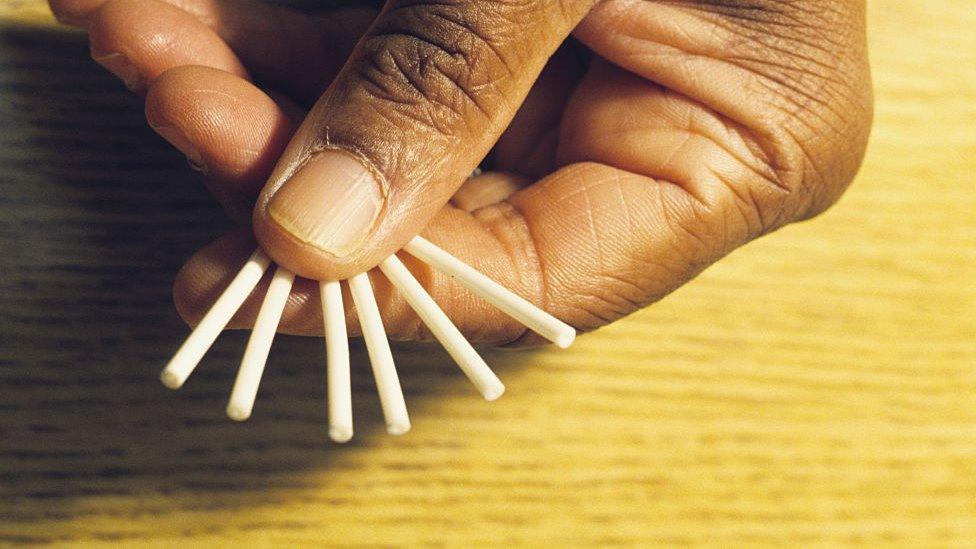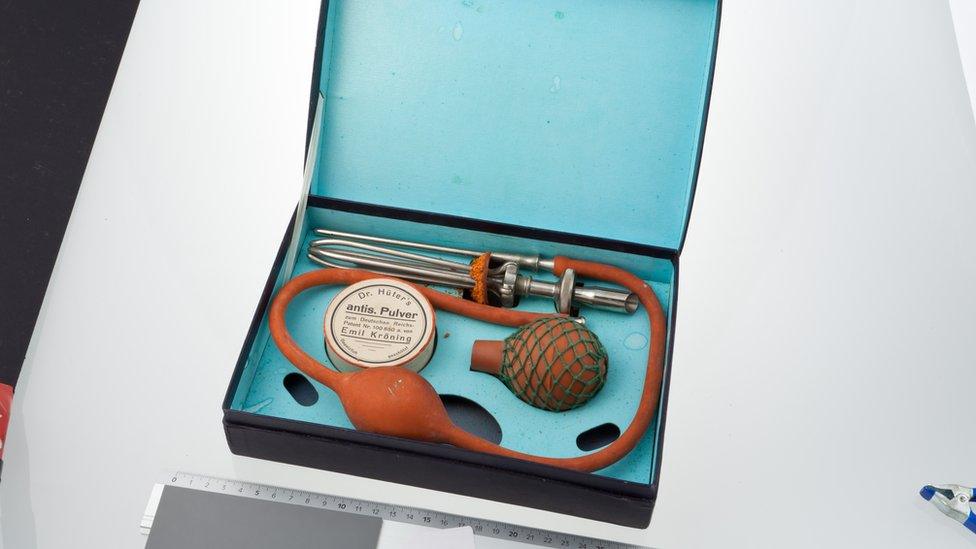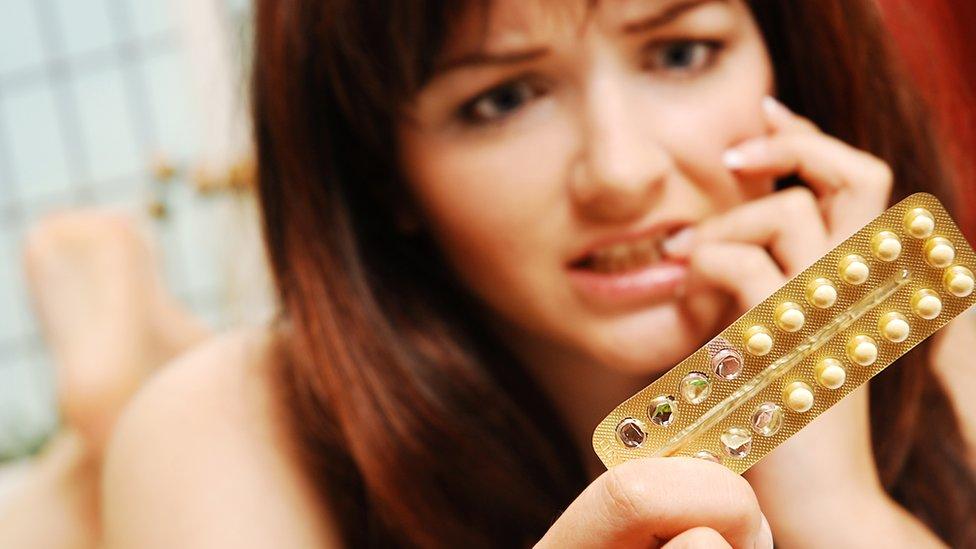Contraception: From fish bladders to home-delivered morning after pills
- Published

The morning after pill has never been more accessible.
Women in the UK are now able to order emergency contraception online for home delivery.
It marks a milestone - less than two decades ago, it was not possible to buy it in pharmacies.
Medicine historian Dr Jesse Olszynko-Gryn said there were parallels between the journey of the morning-after pill and home-pregnancy tests, as both have moved from "medically controlled to increasingly available".
When the first over-the-counter pregnancy test was launched in 1971 - (it involved a test tube in which a woman had to mix her urine and wait two hours) - it was "controversial", said Dr Olszynko-Gryn, from the University of Strathclyde.
"Conservative doctors wrote to MPs, they thought it should be regulated. They thought doctors should do it."
Until the mid-1960s in Britain, pregnancy tests were done by sending a woman's urine to a lab, where it would be injected into a toad. The toad was checked two hours later and if it had laid eggs, the woman was pregnant.

Pregnancy testing with toads in the early 1950s at the NHS laboratory in Watford. Audrey injects a toad with urine from a possibly pregnant woman
But even after home tests were created, well into the 1970s and 80s a lot of women still preferred to go to their GPs or chemists for tests, said Dr Olszynko-Gryn.
"It didn't come along and transform the experience of women overnight," said Dr Olszynko-Gryn, adding that it was only in the 1990s - after the first plastic-stick tests were launched - that home testing became the "new normal".
Now "people don't think twice" about home pregnancy tests, he said.
Women are also choosing to use different contraceptives than they were a decade ago, said the Family Planning Association.
Longer-term contraception - such as implants, injections and the intrauterine device (coil) - "have experienced a surge in popularity over the last 10 years due to a push by sexual health services", a representative for the sexual health charity said.
But the contraceptive pill still remains the most popular option.

More women are choosing the contraceptive implant than they were a decade ago
The FPA said the last 30 years have seen many changes to contraception, including improvements to oral contraceptive pills, the release of the contraceptive vaginal ring, and the introduction of the C-Card that allows young people to access free condoms.
But, it added: "In the last decade, reproductive and sexual health services became the responsibility of local authorities rather than the NHS.
"Since 2014, public health funding has seen significant cuts of £700m. Although teen pregnancy rates are significantly lower now than they were 20 years ago, it is becoming more difficult to access contraception."
It said that according to research in 2016, only about one in 50 GPs was able to offer patients the full range of methods of contraception.
What's next for contraception?
"I think we have come really far... but most of our methods are largely variations on old things," said Clare Murphy, from the British Pregnancy Advisory Service.
"We find different modes of delivering the old hormones in a new way, not genuinely ground-breaking and new."
Despite discussions over the possibility of creating a pill for men, Ms Murphy said it "is just not going to happen".
The FPA also says new methods of contraception for men "are still some way from being publicly available".
Ms Murphy's BPAS research has suggested, external women would be very interested in a once-monthly pill that you would only take if you missed your period to disrupt an implanted egg - but this would be classed as abortion under law.
For now, BPAS would like to see the morning after pill become easier to access - by costing less and being able to pick up off the shelf, without a mandatory consultation. The purpose of the consultation is to assess how likely it will work, says the Faculty of Sexual and Reproductive Healthcare., external
It welcomed the new delivery service from EllaOne - but said it should be cheaper so more can access it.
But she said it was "so bound up with conversations about women's sexuality and irresponsibility".
"We have come a long way, but there's a long way to go even with the existing methods."

Fish bladders and Coca-Cola: What contraception used to be like
The history of contraception stretches back thousands of years,, external with people eating bees or the inside of male deer horns in the hope it would prevent pregnancy.
The oldest form of birth control still practised today is the withdrawal method, according to the FPA.
Aside from that, for centuries women have put acids from fruit, jellies and pastes into their vaginas to prevent conception.
Small sponges or half a squeezed lemon were also used in the 18th Century, according to Vienna's Museum of Contraception and Abortion. , external
Meanwhile, vaginal douching was another popular method dating back hundreds of years - with the household bidet, external serving this purpose in middle class homes, the Museum of Contraception said.

Vaginal douching - or rinsing - was a popular method dating back to the 1600s, which lasted into the 20th Century
And even as late as the mid-20th century, after intercourse women reportedly shook bottles of Coca Cola before opening them in the vagina, in a bid to rinse out any sperm. Later research showed, external that it did not work.
The first latex condoms were available in the 1930s, replacing those made from rubber - and before that, fish bladders and sheep intestines.

And the contraceptive pill became available on the NHS in 1961. The doses were high - with each pill roughly equivalent to seven of the pills in packs today, said the FPA.
The first licensed emergency contraception product was launched in the UK in 1984, with another type available in pharmacies from 2001.

- Published21 January 2019

- Published29 August 2018

- Published26 March 2019

- Published7 August 2018
